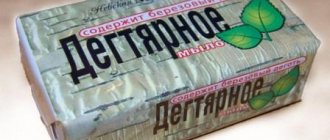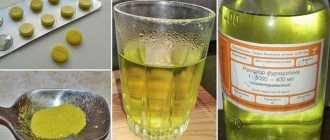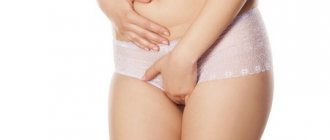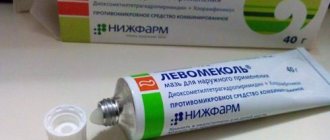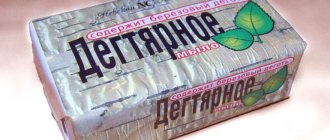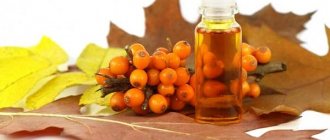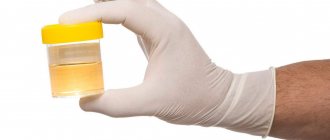Rules of intimate hygiene
To speed up the recovery process and not provoke complications with vaginal candidiasis, you must adhere to the rules of personal hygiene. Basic recommendations:
- If possible, wash with plain water without using soap, gels, aggressive detergents, parabens, dyes, foaming agents, or fragrances. The active substances of most detergents disrupt the natural microflora and acidity of the vagina. The risk of developing allergic reactions increases: redness, itching, peeling, swelling of the external genitalia. Under the influence of chemical detergent components, the ratio of friendly, pathogenic and opportunistic microflora is disrupted, increasing the likelihood of developing candidiasis and other diseases. The risk of decreased local immunity and the addition of secondary infections also increases;
- the procedure is recommended to be carried out twice a day: in the morning and evening; more frequent exposure can also cause disruption of the natural microbiome of the vagina with subsequent exacerbations of candidiasis;
- it is necessary to wash in the direction from the pubis to the anus to prevent bacteria from entering the vagina from the rectum;
- after washing, you need to wipe the external genitalia with a clean, soft towel using gentle, blotting movements;
- After the procedure, it is recommended to use comfortable underwear made from natural fabrics, without the use of synthetics. It is advisable to use panty liners in minimal quantities so as not to provoke dysbacteriosis.
Washing can help with itching and burning during thrush.
When you have a bowel movement, more frequent washes are possible. After completing the procedure, you can use suppositories and vaginal tablets prescribed by the doctor. It is important to remember that washing is an auxiliary element of treatment, which does not replace the need to use medications or follow a diet. To achieve a better result, it is also important to restore the work and rest schedule, sleep, and eliminate sources of glucose, fructose, and yeast from the diet.
How to wash yourself properly if you have thrush?
- You can use ordinary tap water if it looks clean in appearance, without rust or dirt. Otherwise, it is better to use boiled or bottled water. If you plan to douche, then take only boiled water for these procedures.
- The water for washing should not cause discomfort and be warm. Using cool water can cause inflammation. If for some reason you use water from a river or well, you must first boil it and cool it to the desired temperature, and only then use it.
If for some reason you cannot wash yourself using water, wet sanitary napkins will come to your aid. Don’t skimp on their quality, buy special ones for intimate hygiene. The use of napkins is a temporary measure that does not replace thorough washing with water in case of thrush.
- The number of daily washing procedures is from 2 to 8. Carry out hygiene procedures at any opportunity. It should be remembered that washing cannot replace medicinal procedures prescribed by a doctor; it is a necessary addition to them.
- It is necessary to irrigate the intimate organs with water strictly from front to back. Get yourself a separate clean and soft towel. Do not allow other family members, especially children, to use it. Avoid rough movements while wiping. The intimate area during illness is highly sensitive, so you should gently blot it, without rubbing or pressing.
- Only the external genitalia need to be washed. If necessary, you can douche using boiled water and special herbal decoctions or solutions.
If you have thrush, you should wear underwear made from natural materials that allow air to pass through well, and change it regularly - up to 3-4 times a day. During treatment, avoid tight-fitting thong panties. If you decide to use panty liners, try to change them as often as possible, ideally every 1 – 1.5 hours.
Washing during pregnancy
Thrush is a common companion of pregnant women. This disease occurs due to hormonal changes in the body and decreased immunity. Treatment of thrush in pregnant women should be carried out exclusively on the recommendation of a gynecologist. At the first unpleasant symptoms, contact a antenatal clinic; self-treatment can harm the baby’s health!
Pregnant women need to wash themselves as often as possible, ideally after each visit to the toilet, after waking up and before going to bed. Self-prepared solutions should not be overly concentrated so as not to cause an allergic reaction.
Be wary of using sage infusion as it may adversely affect the health of the fetus and the woman. Solutions for washing can be used based on soda, furatsilin, decoction of medicinal herbs: chamomile, nettle, oak bark, calendula, nettle.
Features of washing during menstruation
During menstruation, the cervix of the uterus opens slightly, so women are strictly prohibited from douching on such days, so as not to introduce an infection into the body. You can wash yourself with intimate gels or soda solution. Treating thrush during menstruation is difficult, but there are special remedies that your doctor will prescribe for you. Even if you are menstruating, consult your doctor for advice.
Soda
Soda solution is one of the most popular means used for washing during frequent exacerbations of vaginal candidiasis. Soda has an antiseptic effect, speeds up the healing process, reduces the external symptoms of candidiasis: burning, itching, swelling, redness of tissues and mucous membranes. The remedy does not affect the root causes of candidiasis and can only be used as an auxiliary element of treatment. To prepare a medicinal solution, dissolve a tablespoon in 1 liter of warm water. The resulting solution can be used for washing, as well as preparing sitz baths.
Soda solution can be combined with pharmaceutical preparations: both solutions for washing and suppositories, as well as medicinal plants, with prior agreement with the doctor. If a deterioration in the clinical picture is observed when using soda, you should stop using the product and consult a doctor.
Answers on questions
What soap to wash with
Avoid using antibacterial soap because it kills beneficial bacteria that live on the body and help kill pathogens.
It is best to use special intimate hygiene products. They have a gentle effect on the mucous membrane and maintain the necessary acid-base balance.
How to wash your face during pregnancy
The same drugs can be used. However, pregnancy is often accompanied by allergies, so caution must be exercised.
What soap to wash with
For thrush and outside of exacerbations of the disease, the use of soap to wash the external genitalia is not recommended. This product creates an alkaline environment that is favorable for the growth and reproduction of pathogenic and conditionally pathogenic microorganisms, which can provoke regular exacerbations of thrush, the development of dysbacteriosis, as well as the addition of other viral and bacterial infections. Both baby and laundry soap are not safe. Women with thrush are advised to wash with plain flowing water, or medicinal solutions, as well as plant decoctions recommended by the doctor.
Often, improper adherence to personal hygiene rules, including the use of soap, can become a trigger for frequent relapses of the disease.
It is also necessary to take into account that the use of laundry and tar soap can cause dry skin and the development of allergic reactions. When the skin is dry, microcracks and wounds appear, the risk of decreased local immunity and the addition of secondary infections increases, as well as aggravation of the course of vaginal candidiasis.
During pregnancy
Pregnancy is a condition in which hormonal changes occur in all body systems and changes in vaginal pH. Its acidity reaches its maximum compared to all days of the menstrual cycle. This environment is favorable for the growth of fungi of the genus Candida. During pregnancy, it is not advisable to use laundry soap for thrush. This is due to the following effects:
- sharply alkaline reaction of soap (pH 11-12);
- neutralization of lactic acid produced by lactobacilli;
- causes itching and irritation;
- possibility of tissue damage (microcracks, cervical erosion).
Increasing acidity in the vagina is necessary to protect the mother and fetus from bacterial and parasitic infections. The pH reaches 3.5-4. Whereas in the normal state it is 4-7. An acidic environment contributes to the normal course of pregnancy. During this period, it is necessary to wash with soap with a neutral pH. It is better not to use laundry soap for thrush in pregnant women, but to give preference to traditional methods of treating candidiasis.
At home
Before washing yourself with any products at home, you should consult your doctor. At home, you can use medicinal herbs for washing. The most effective recipes:
- Pour a tablespoon of dried chamomile flowers into a glass of boiling water, leave for 30-40 minutes, strain. Dilute the resulting infusion with water and wash twice a day. The finished product is not intended for long-term use. The best option: preparing a fresh infusion for each washing procedure;
- mix chamomile and calendula flowers in equal proportions, add water, boil in a water bath for 5-10 minutes. Remove from heat, cool to a comfortable temperature, and use for washing 1-2 times a day. This product has a pronounced anti-inflammatory effect, will reduce skin itching, redness, and irritation;
- mix chamomile with celandine, immortelle, sage in equal proportions, pour boiling water, leave for 1 hour. Strain and use as directed 1-2 times a day. The course of procedures is 3-5 days. If during this time the symptoms of candidiasis do not decrease, you should consult your doctor again;
- oak bark is combined with burdock roots and chamomile, boiled in a water bath for 10 minutes. Cool to a comfortable temperature and wash with the resulting product twice a day. This herbal infusion should not be used for longer than 5 days. If symptoms of thrush persist during this time, therapy must be supplemented with antimycotics and probiotics/metabiotics.
What tools to use
For washing, use medications sold in pharmacies or traditional medicine. It is necessary to take into account allergy to the components of the medicinal solution. Before starting treatment, you should visit a gynecologist.
Herbal decoctions
Chamomile has an active anti-inflammatory and antimicrobial effect for thrush. The recipe is simple:
- 1 tbsp. pour a spoonful of chamomile into 1 liter of boiling water;
- let it brew for half an hour, strain, and be sure to cool.
The herb of calendula and millennial is brewed in the same way. Washing with calendula is allowed even during the menstrual cycle. You can wash yourself with sage when you have thrush to achieve a disinfectant effect.
A tincture based on oak bark (or burdock root) will be an inexpensive, effective means of combating candidiasis. Washing with a decoction of oak bark and dried nettle helps relieve the symptoms of candidiasis after just a few uses.
To prepare, mix:
- 2 tbsp. l. oak bark and nettle;
- pour 1 liter of boiled water.
The remedy must be infused for half an hour, then strained and cooled. You can wash yourself 2 times a day. To enhance the therapeutic effect, you should alternate procedures based on chamomile, yarrow, sage, and calendula.
Soda solution
Gynecologists recognize baking soda as an effective and harmless remedy. Baking soda creates an unfavorable environment for the growth of Candida fungi. Washing with soda for thrush helps to completely cure the fungus.
To get rid of thrush, it is enough to constantly wash yourself with the solution: 1 tbsp. l. soda in 1 liter of water, previously boiled and cooled to a warm state.
Therapeutic baths have a good effect. For this you will need a deep basin. Dissolve the soda in warm water and place the vagina in the basin for 10-15 minutes. It will be possible to defeat candidiasis after 5 days of daily treatment. You can add 5-10 drops of iodine to the washing soda solution to enhance the healing effect.
Antiseptics
If unpleasant symptoms of candidiasis appear, antiseptics are used to wash away. They help remove fungal plaque and are also effective in preventing re-infection. Herbal medicinal antiseptics (sage, chamomile, ginger juice, eucalyptus, celandine) have been replaced by modern medications (Chlorophyllipt, Citeal, Chlorhexidine, Fluomizin). It is best to discuss the choice of antiseptic with your gynecologist.
A reliable remedy for candidiasis is laundry or tar soap. To wash with laundry soap for thrush, you need to prepare a solution. Dissolve a piece of soap in warm water until a viscous consistency is obtained. During treatment, the foam can be gently pushed into the vagina a few centimeters.
It is not recommended to wash off the solution immediately; you can leave it for half an hour. The procedure is carried out once a day so as not to dry out the mucous membrane.
You can also wash yourself with tar soap for thrush. Birch tar, the main component, disrupts the favorable environment for the development of Candida fungi. Tar soap can be used for daily hygiene. After the procedure, soap residues must be thoroughly removed with running water.
Kefir
The fermented milk product strengthens the immune system and stabilizes intestinal activity, which is so necessary for candidiasis. Kefir can also have a beneficial effect when used externally. Washing with kefir for thrush helps restore the microflora. It is best to wash at night before going to bed.
Many patients respond well to the treatment of candidiasis with tampons soaked in low-fat kefir.
Furacilin
To use furatsilin for washing with thrush, you need to prepare an antiseptic solution. You should dilute 10 tablets per 1 liter of water. You can place the tablets in a pan of water, bring to a boil, then cool. To improve the result, you can add a little iodine.
Intimate gels
The greatest demand is:
- Nivea – contains antiseptic Bisabolol and chamomile extract;
- Lactacyd Femina relieves inflammation, normalizes vaginal pH levels;
- Gynocomfort - prescribed during pregnancy;
- Epigen Intim with glycyrrhizic acid, which effectively eliminates fungus.
All intimate gels, the main component of which is lactic acid, are suitable for the treatment of candidiasis. They normalize the number of lactobacilli in the vagina, eliminate swelling and redness, relieve pain and itching.
Chlorhexidine
Washing with Chlorhexidine has a bactericidal, antiseptic effect and does not cause irritation or burns to the skin. It is recommended to wash with chlorhexidine for thrush with a 1:10 solution with boiled cool water. The medicine, at a dosage of 0.05%, does not require dilution. First, you need to wash your genitals with running water without soap, since the drug is not compatible with cosmetics.
Washing is carried out 2 times a day; in case of severe itching, the number of procedures can be increased.
Burdock root
Burdock decoction is used not only for washing or douching, but also for internal use. This is a fairly effective remedy for strengthening the immune system. Preparation of the decoction includes the following steps:
- carefully chop the burdock root (5 tbsp), pour the mixture into an enamel container;
- After the mixture has boiled, reduce the heat and let the broth simmer for another ten minutes.
It is recommended to wash yourself with a decoction of burdock root twice a day - in the morning and immediately before going to bed. It is best to take the infusion orally on an empty stomach.
Chamomile + calendula
If the disease was diagnosed at an early stage, it is advisable to use an infusion of calendula and chamomile. It is quite effective in preventing the development of the disease.
You can prepare the infusion as follows:
- Mix calendula tincture (1 tablespoon) and chamomile (2 tablespoons) thoroughly and place in a large container;
- pour the mixture of herbs with boiling water (1 liter) and leave to steep for 24 hours;
- After 24 hours, arm yourself with gauze and strain the infusion.
It is advisable to wash yourself twice a day: in the first and second half of the day - before going to bed. To avoid relapse, it is necessary to wash with the solution for a week.
